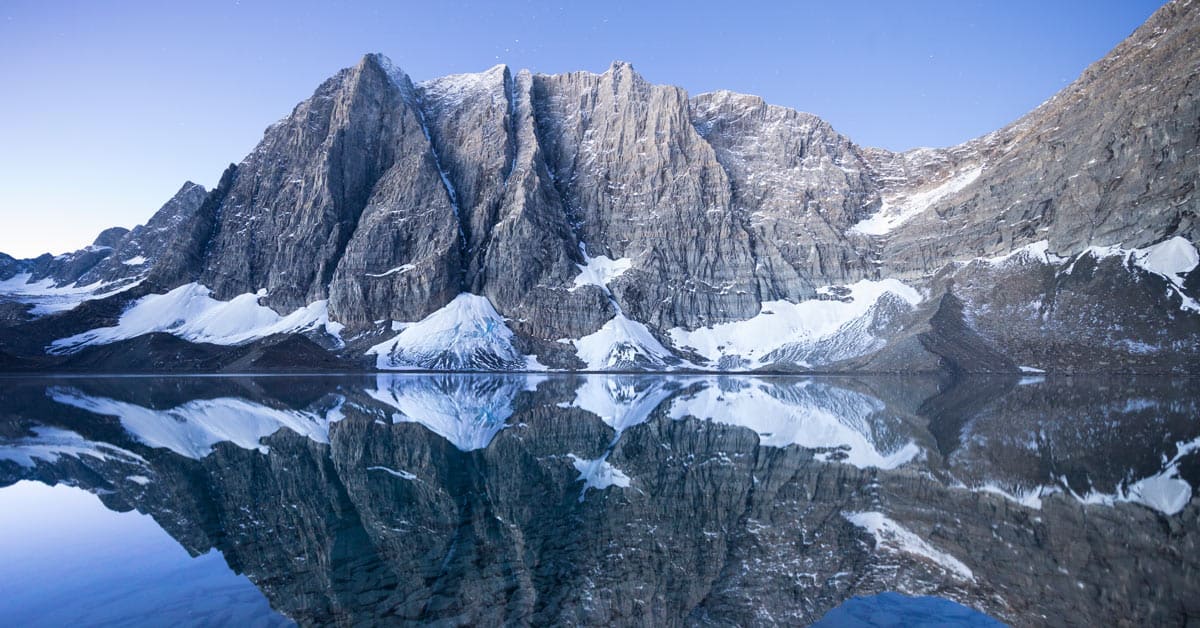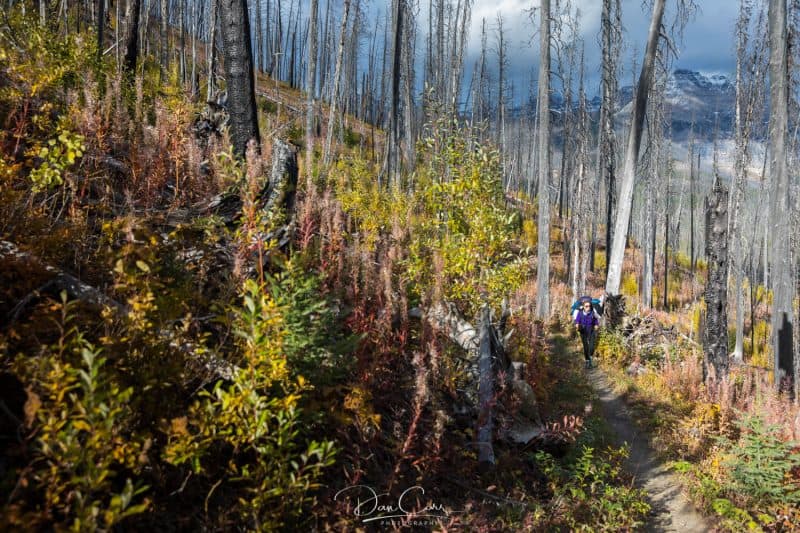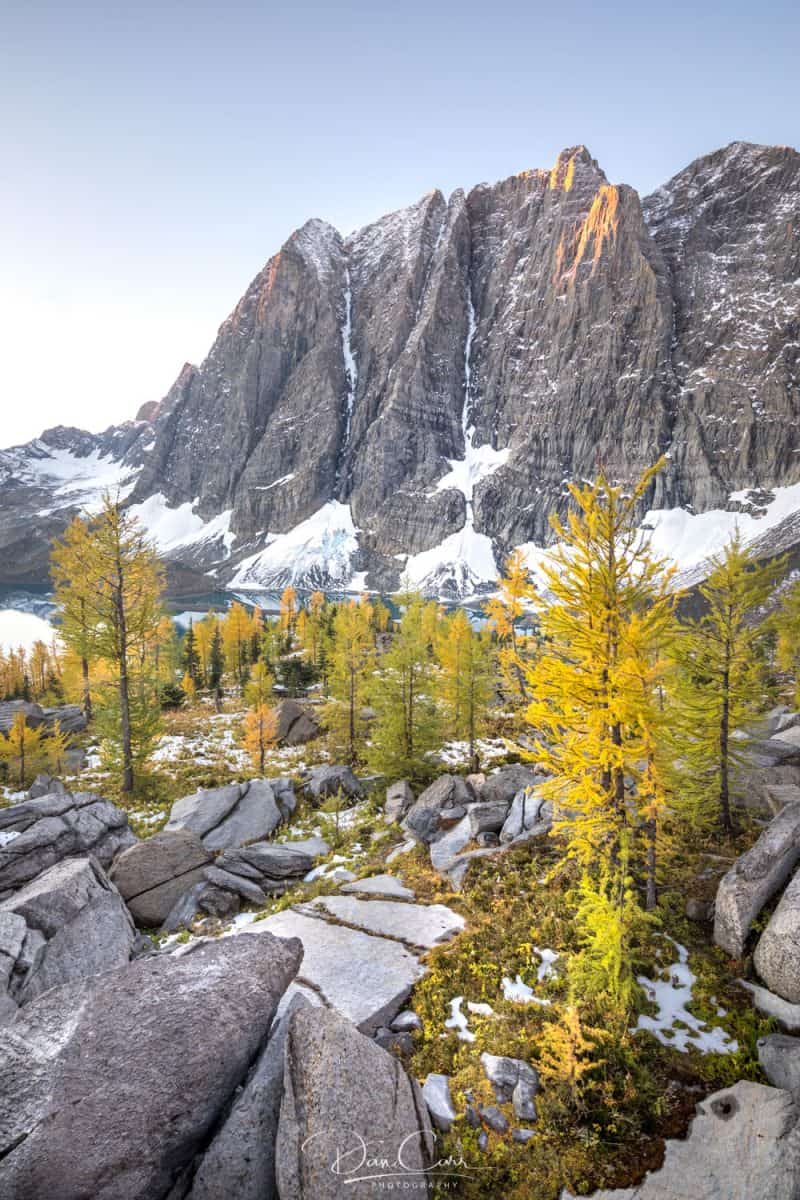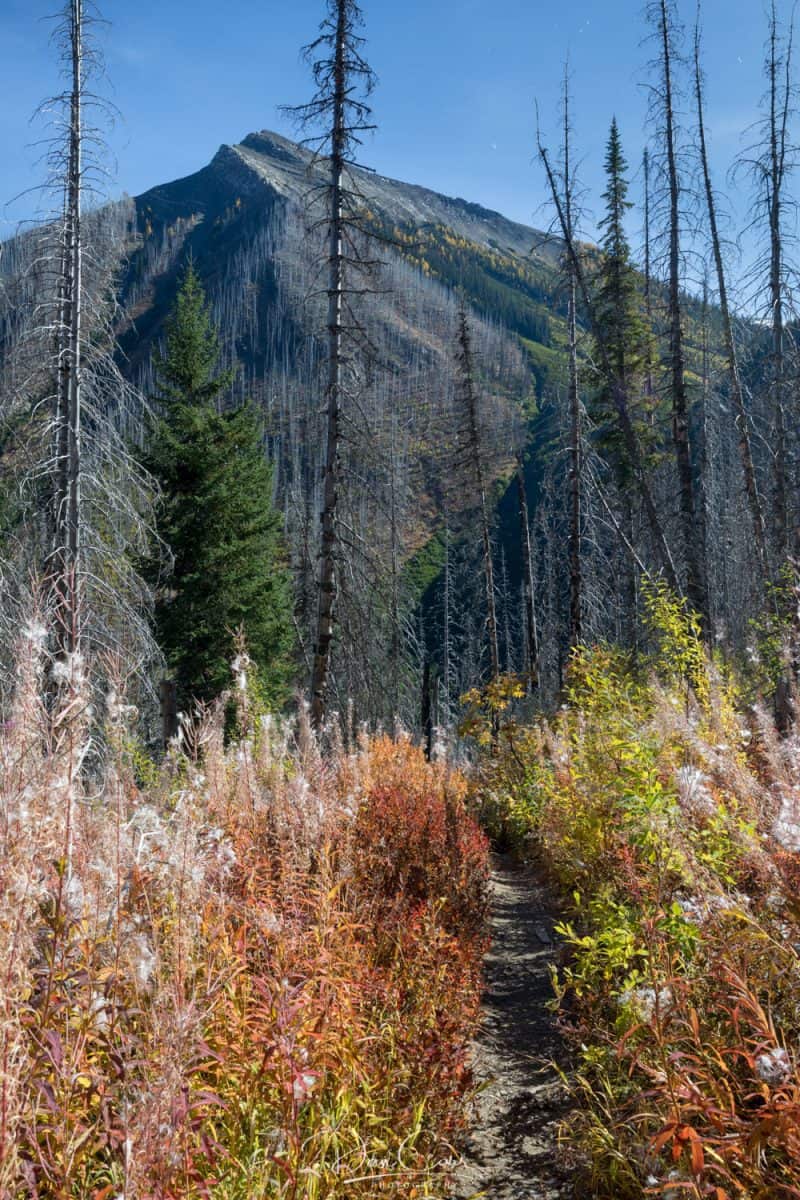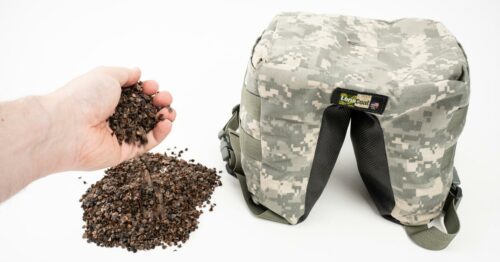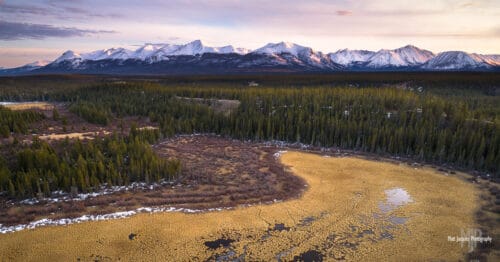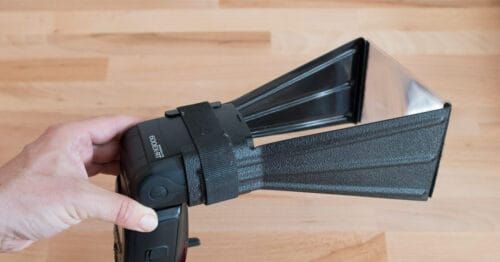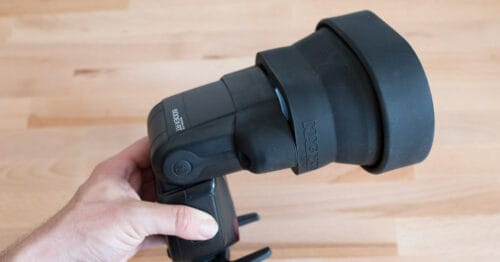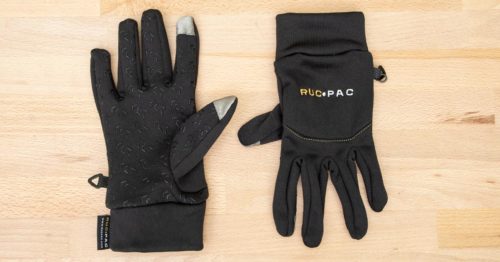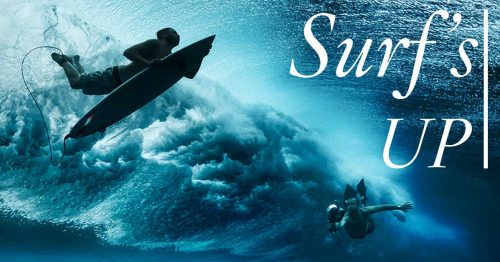Kootenay National Park straddles the border between British Columbia and Alberta, just a hundred miles West of the world famous Banff National Park. To Western Canadian adventure seekers it’s relatively well known, but due to its proximity to Banff and Jasper National Parks on the Albertan side of the border, it sees considerably less traffic from the hordes of visiting photographers in the region.
Perhaps the most iconic location in the park is the Numa Pass which contains the dramatically vertical Rockwall, towering over the crystal clear waters of Floe Lake. The Numa Pass is famous for its golden larches in the fall, and visiting the area at that time has long been on my photography bucket list. Larch colours are in their prime for just a week or two, so timing a trip like that can be difficult!
The Challenge
My travel and work schedule was busy in the fall of 2017 and whilst I kept one ear open for reports of the larches starting to turn, it was looking like I might not find the right window of time to make it work. On my return from a trip to the Yukon I heard the first few hints from friends in Alberta that the larches were starting get their golden colouring. Unfortunately I was scheduled to head up to a an alpine hut in the Coast Range mountains immediately, and when I returned from that trip there was only a two day gap before I had more work scheduled near my home in Western British Columbia.
Could I get to Floe Lake and back again in two days? That was the question that ran over and over again in my mind during my hut trip that week.
With Kootenay National Park on the Eastern border, the parking lot for the Floe Lake trailhead is 500 miles from my home on the West Coast of BC. The total round trip in 48 hours would be 1000 miles of driving through mountain passes, which sounds challenging enough, but the real kicker is that there would also have to be 15 miles of steep hiking, and an overnight camp in the backcountry once I got there.
The Packing List
Packing for a backcountry camping trip is always challenging when steep terrain is involved, because you know that every gram of extra gear will feel like it weighs ten times that when you’re scrambling up to your destination at the end of a long day. By the time you factor in all your camping gear with a camera, lenses, a few filters and a tripod, there’s simply no such thing as a lightweight load for a landscape photographer.Whilst I would never call my pack light, I have made some significant weight savings in the past few years by using the Really Right Stuff TFC-14 tripod, paired with the BC-18 Micro Ball for all my travel and backcountry tripod needs.
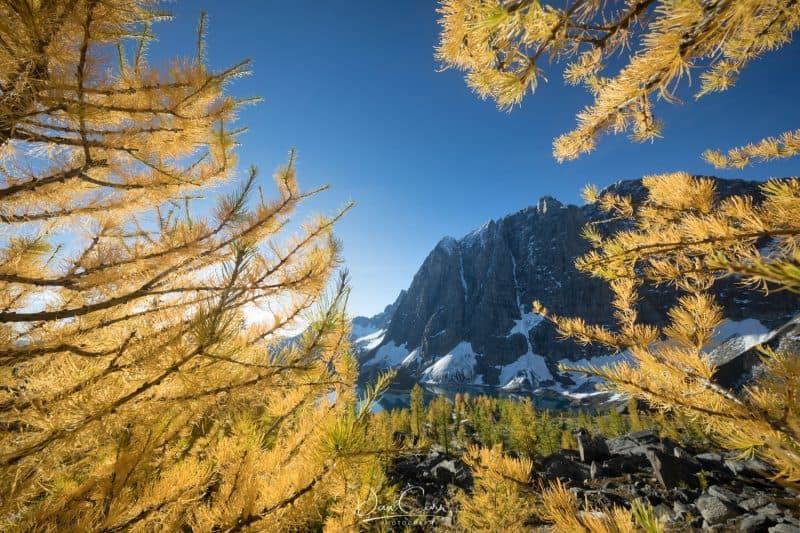
For the tripod part of the equation I was already a TQC-14 user, so I jumped at the opportunity to shave even more weight when they launched the TFC-14. Compared to the TQC-14, the TFC-14 uses a fixed apex and has no centre column, resulting not only in a lighter package, but also one that collapses to a smaller diameter. In bad weather, it’s actually small enough that I can fit it inside my regular hiking backpack.
You still need to use an L bracket if you want to shoot in vertical orientation with one of the RRS Micro Balls, but once you have that on your camera, pairing the TFC-14 tripod with the BPC-16 gives you a support package that weighs only 1105g and will hold about 25lbs! I trust the BC-18 with my pro gear, and have no issues shooting long exposures with it.
Full gear list for this trip:
- Canon 5D Mark IV
- Canon 11-24mm f/4 L
- Canon 24-70 f/2.8 L II
- Canon 100-400 f/4.5-5.6 L IS II
- RRS TFC-14 Tripod
- RRS BC-18 Micro Ball tripod head (see RRS head comparison)
- Breakthrough Photography Circular Polarizer (Read:4 reasons you need a polarizer)
- Artceryx Bora AR 50 backpack
- MSR Hubba Hubba 3-season tent
- Thermarest NeoAir matress
- Thermarest Parsec sleeping bag
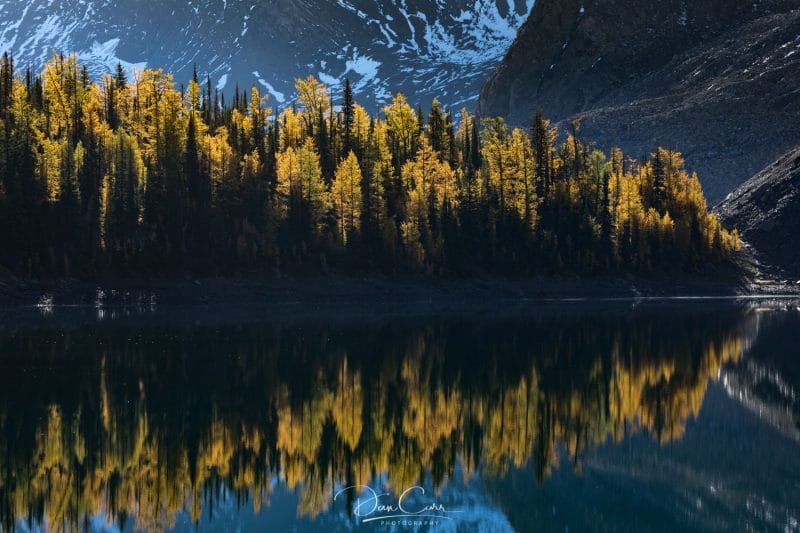
The Execution
The original plan for the rapid Floe Lake trip had me arriving at the campsite near the lake just prior to sunset, and I was to use that time for scouting angles and locations for sunrise the following morning. Due to the incredible time constraints on the trip, I would only have about 3 hours of photography that next morning before needing to start the return hike! To make things even tougher, I vastly underestimated the steepness of the trail to the lake, which left me arriving in the dark and sacrificing the time in which I was supposed to be using to learn the lay of the land for the next morning’s sunrise.
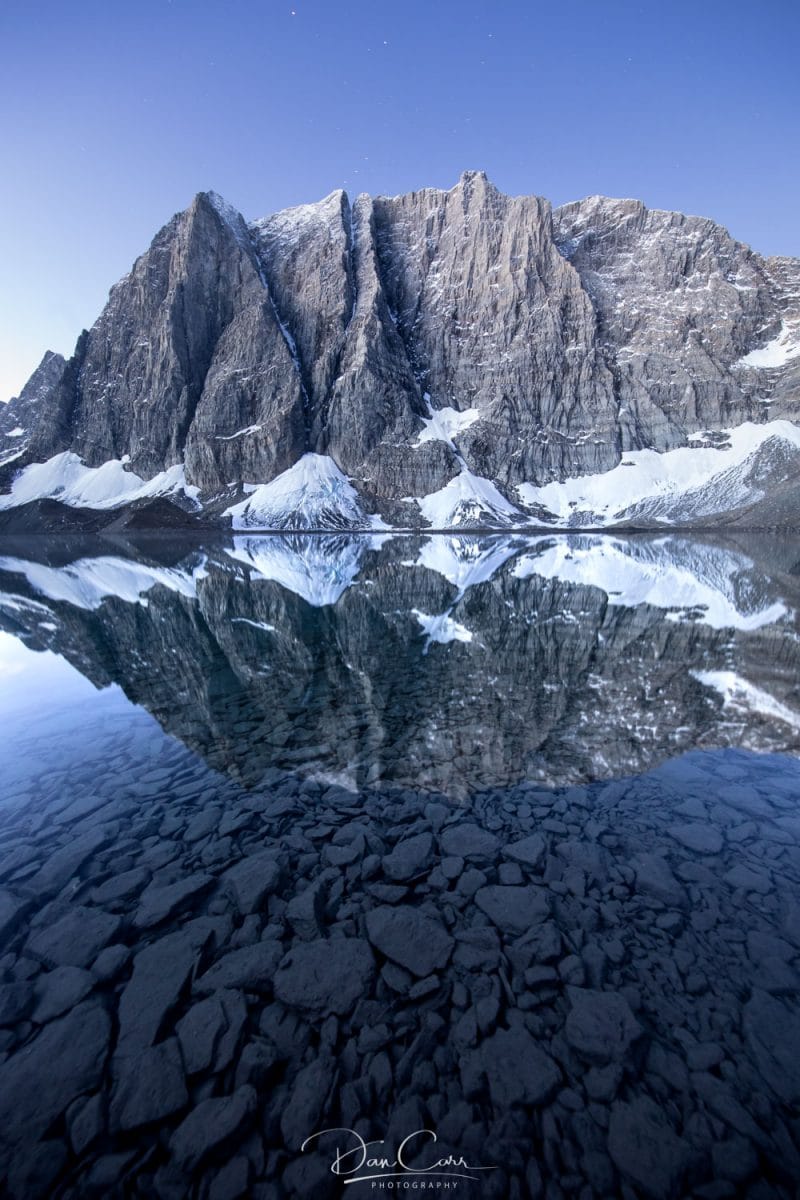
I think every photographer is familiar with that slightly nervous feeling you get when the sun is about to rise and you’re wondering if you’re in the right position. The following morning this feeling was heightened because not only had I never seen the place in daylight before, but I’d also just travelled across the entire province to have a single shot at capturing something special in those first few moments of the day. Due to the remote location of the lake, there was also no real way to guarantee that the larch colours were in their prime. All I could do was base my guess of a few reports from other nearby locations.
After a short sleep I left my tent a couple of hours before sunrise so that I could spend a little time using some wide-angle long exposure images simply to get a sense of the scene in front of me that would be revealed once the sun came up. As the first photos started to appear on the screen of my camera, the adrenalin started to kick in as I realized the sky was clear and I was going to have a pretty good chance of getting the photos I wanted… as long as the larches were golden!
This pre-dawn time proved to be incredibly important, not only because I captured the first of my favourite photos from the day with a 30-second exposure over the flat calm lake, but also because it showed me that I wasn’t quite in the right place for the larch photos. I would need to quickly reposition myself about half a mile away to get back from the lake and behind some of the larches. By placing the larches between me and the sun, it would ensure that they were beautifully backlit as it rose.
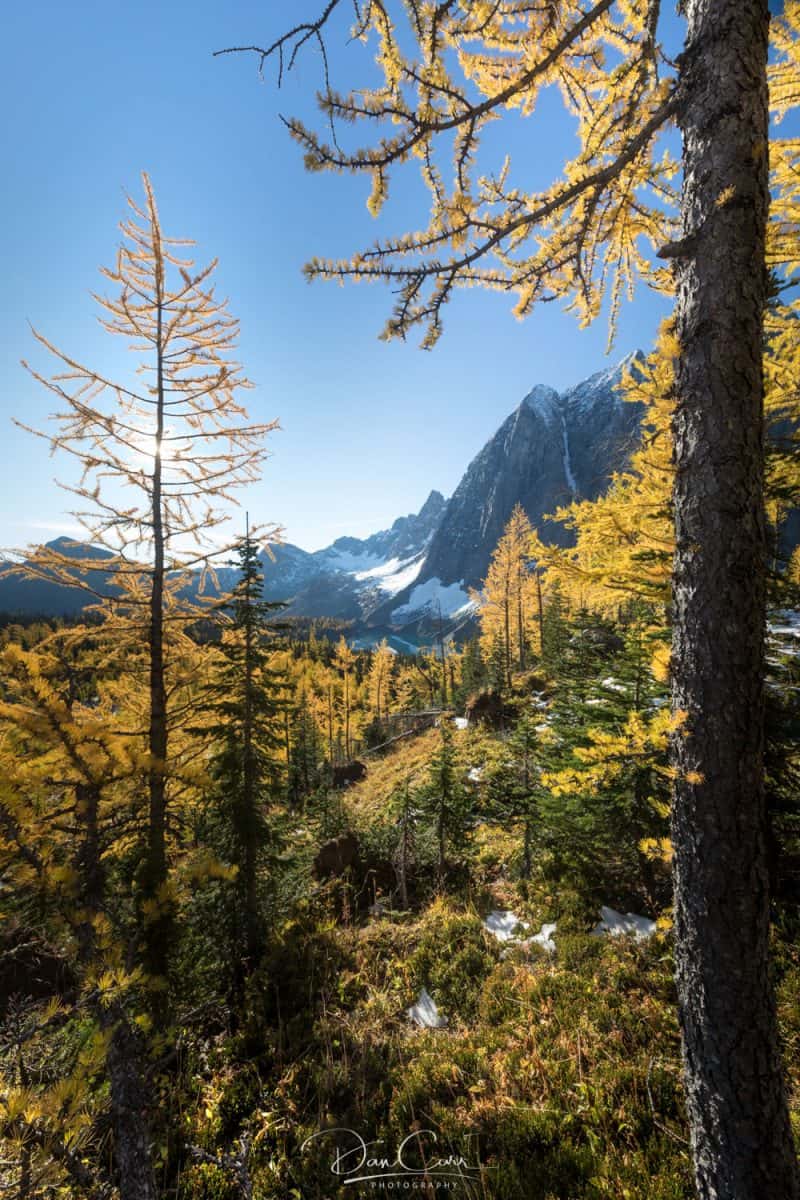
The Satisfaction
It’s no exaggeration to say that it’s these kinds of moments that I live for. When a plan falls into place and you know that you have given every last ounce of energy to set yourself up for success on that shoot. It was a short morning of photography, but the tranquility of the location and the incredible colours that greeted me with the sunrise, made it one of the most memorable mornings of my life.
The Stats
Some stats from my 48 hour trip: 1614 km driven (1003 miles), 23 hours of driving time, 9 hours of hiking, 7 hours of sleeping, 3 hours of photography. Caffeine consumed: A lot!

